Virginia Film Festival, Part 1: Day of Future Past
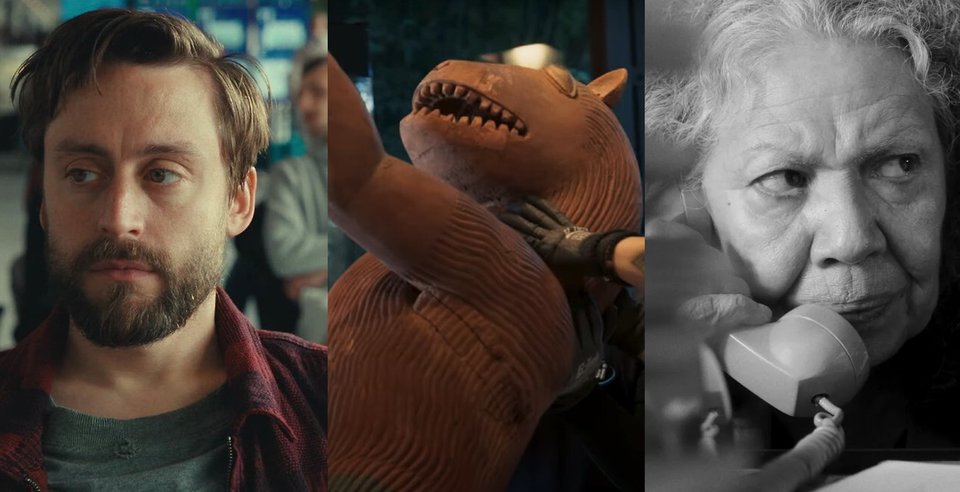
Hi there. If you're reading this at time of publication, you're probably still feeling low about last week. In the spirit of recovery I've fleshed out the capsule reviews of the five movies I saw in a two-day period, November 2-3, at the Virginia Film Festival in Charlottesville. I was still in the doldrums from the breakup I mentioned in my previous entry, and the whirlwind schedule did a lot to pull me out of my funk. I hope that sharing the films that pulled me out will help you do the same. My thoughts on them have not changed since last Tuesday, and if anything the films have only become more resonant.
The account is broken up into two entries covering the movies in the order I saw them, which conveniently groups them thematically. First up: historical traumas.
Saturday, 11/02, 12:00pm
A Real Pain
(dir. Jesse Eisenberg)
There's a feeling of a generational shift in Holocaust cinema that I first felt with last year's The Zone of Interest. Rather than just relating or conveying the experience of the Holocaust, there was in that film a focus on how it is viewed—or not, as is the case of its Auschwitz commandant and his family. The movie ends with an implicit skepticism of how we have made the unimaginable scale of its world-historical crimes more knowable, cutting in footage of the tidily-maintained present-day Auschwitz museum like an intrusive thought. A Real Pain thematically picks up where The Zone of Interest leads off and builds an entire feature around questions of memory and propriety.
The narrative structure of the movie itself is shaped by the presentation of the Shoah rather than a chronological accounting of it. Uptight well-to-do family man David (Jesse Eisenberg) and his emotionally blunt stoner cousin Benji (Kieran Culkin) have recently lost their grandmother, a Holocaust survivor. To better understand her and honor her memory, they travel to Warsaw for a Holocaust 'Heritage' tour, with plans to split off and go to the house she grew up in. Accompanying David and Benji are a mix of other characters with varying relationships to Judaism, including a married couple (Daniel Oreskes and Liza Sadovy), a recent divorcee (Jennifer Grey), and a Black convert (Kurt Egiawan). Leading them is James (Will Sharpe), a Gentile whose scholarly knowledge of Jewish history eclipses any of the other characters'. Benji makes no secret of his mounting irritation with James' dry and rehearsed recitation of the facts. This in turn feeds David's frustration with his charismatic and carefree cousin, which has been growing for some time. The movie doubles as a Holocaust tour, one that Eisenberg himself took with his wife, taking the audience to such sites as the monument to the Warsaw Uprising, a Jewish cemetary containing the oldest headstone in Poland, and even the Majdanek concentration camp—even as it expresses ambivalance about the very notion of Holocaust tourism.
It all sounds rather dour but is quite the opposite; this may well be the funniest Holocaust film ever made. Eisenberg and Culkin have an easy chemistry that sells how two people so different from each other could get along their whole lives. Benji is an agent of chaos who wears his emotions on his torn sleeve, be it laxity, boredom, or overhwelming sadness, and he inevitably upends every social situation he's in. David is by contrast a bundle of neuroses following behind and constantly apologizing for Benji. The humor is what you would expect from such an odd couple pairing, one that leans into both actors' established type. But funny is funny, and the two are very funny together, as is their shifting relationships with the rest of the group. This latter aspect could perhaps have been even more thoroughly mined, and indeed it's a little surprising that the supporting cast does not include an Orthodox Jew to heighten the contradictions, but that would have taken away from that crucial central relationship.
The humor never comes at the expense of its horrific subject, but instead serves to highlight the characters' and the audience's separation from it and how they negotiate that distance. The Zone of Interest's entire conceit—less generously, its gimmick—was functionally a joke, a genocide movie where we never see any genocide, due to how its Nazi characters have compartmentalized the crimes in their midst and choose not to see what is in front of them. In A Real Pain seeing, witnessing, is impossible; the characters are a full two generations removed from the death camps, the ones with the first-hand experience have passed on, and now the younger generations have—in good, bad, and funny ways—to negotiate their connection to a collective trauma that has passed into historical memory.
The American voting populace has lost those memories, if not compartmentalized them, while the moviegoing set is by this point over-familiar with the Holocaust as a dramatic subject. What shocks the conscience has lost its capacity to surprise the audience and rendered the topic a guaranteed Oscar nomination. A Real Pain does much to refresh that subject, by nudgingly reminding its audience that the past is never really past.
(Currently in theaters in widening U.S. release)
Saturday, 11/02, 2:30pm
Dahomey
(dir. Mati Diop)
A good idea goes a long way, and the idea here is good indeed: a documentary about twenty-six works of art and sculpture that decades and centuries ago were expropriated (read: pillaged) from the Kingdom of Dahomey, and are now repatriated—told from the point of view of the art. It's always welcome to see a documentary that eschews the talking head format for an approach that lets the material speak for itself, and Dahomey does that quite literally.
That speech, The Spirit of the Art, voiced by Makenzy Orcel, is a highlight. A harsh whisper, processed with reverb, bewildered by circumstance, it has an otherworldly, mythic quality befitting a cultural relic out of place and out of time. It's the kind of sidewise angle that adds dimension and shading that no amount of dry factual recitation could convey. It reminded me a lot of the narrator in This Is Not a Burial, It's a Resurrection, a voice both subjective and omniscient. Both are the voice of a postcolonial nation grappling with late independence in very different ways, there an internal struggle with creeping modernity, here a reclamation of history.
The footage over which this elder speech is overlaid is process-driven, following the art—primarily a statue of Dahomey's King Ghézo—in its journey from the Musée du Quai Branly – Jacques Chirac in Paris back to its ancestral land, the modern nation of Benin. We see it carefully dismounted and packed, loaded onto a cargo plane, and brought to the city Abomey. We see it welcomed by the people, its significance debated by the university students there to see these works of heritage returned. We see the Kingdom of Dahomey as it is now, so different from when the works were taken. It all highlights just how much care is required to protect these works, and implicitly reminds one of how many works did not receive it and were lost. At a time when so much of what we consider culture is converted into ones and zeroes sent in packets through cables and the air to appear nearly instantaneously on screens across the world, it's a reminder of the power of physical objects. The incessant, compulsive scroll recedes in deference to presence.
Alas the film isn't quite able to sustain its already brief runtime. The Voice is used only sparingly. This is fine and somewhat necessary and works while the art is in constant transit. The art stops moving in the section involving the university students, though, and so does the movie's pacing. The student speeches are a necessary component, the art is nothing without its people, its audience, and they have petitioned and agitated for its return for so long. But the doc to this point has had an inherent momentum to its story of relocation, and it loses something when it stops speaking to be spoken about.
Still, the unique framing gives Dahomey a memorable vibe. It also ends strongly, with gorgeous footage of Abomey after dark, its old and weathered structures bathed in modern neon light. There are so many victims of history who can never be made whole, and we should treasure the rare instances they can.
(Currently streaming on Mubi and in limited theatrical release in the U.S. (Lincoln Center), France, and elsewhere)
Saturday, 11/02, 8:20pm
We Shall Not Be Moved/No nos moverán
(dir. Pierre Saint Martín Castellanos)
First features are special for their rawness. Not emotional rawness, though they may have that, but creative. A first film (or album or novel) represents a filmmaker's first attempt at a full-length work after learning the fundamentals on shorter pieces. With the director still relatively new at their craft and with few resources their work may lack polish, but that makes them invaluable as statements of purpose. The director's creative preoccupations are the most abundant resource at hand and so they give the movie a palpable motivation and hunger that lets it punch above its weight. So it is with We Shall Not Be Moved, the feature debut of Mexican director Pierre Saint Martín Castellanos, whose funny, character-driven approach to a historical tragedy was the biggest surprise of my time at the Virginia Film Festival.
The opening montage of massacre news footage sets the scene, but it's what comes after that sets the tone: a neighbor cussing out an aging and uncaring woman, Socorro (Luisa Huertas), for the smoke coming from her kitchen for the toast her sister keeps burning; then a second neighbor tells the first to shut the fuck up, and then Socorro threatens violence against them both. Never one to suffer fools, she is especially on edge on the birthday of her brother Coque, who was tortured and killed as part of the 1968 Tlatelolco massacre of university students by the Mexican army. The grief has never been far, and so when Socorro receives a message bearing the name of the soldato who murdered him, she begins ferretting out where he is living, so that she may administer a justice that goes beyond her purview as an attorney.
I've never seen a character quite like Socorro: a late middle-aged woman professional, shrewd if short-tempered, whose grief and desire for vengeance corrodes her relationships with the people around her. The movie is wisely built around Huertas' prickly performance, which softens none of the character's rough edges in her interactions with others. This includes her sister, to whom she hasn't spoken in years; Candiani, a colleague with whom she trades flirtatious banter and quasi-legal favors (Juan Carlos Colombo); her son Jorge (Pedro Hernández), out of work and living under her roof with his wife Lucía (Agustina Quinci); and especially her dim but sweet errand boy Sidarta (José Alberto Patiño). The movie ends up being something of a character study for that, with the revenge plot progressing in tandem with those relationships. They are entertaining and vividly drawn, in some cases from Martín's own family and life; much of Socorro was based on Martín's mother, who actually did lose a brother, an uncle he never knew, at the Plaza de la Tres Culturas.
Most of the film take takes place within Socorro's cluttered apartment, enough that if they wanted Castellanos and co-writer Iker Compeán Leroux could retool their script as a stageplay without much adjustment. But Castellanos' directorial decisions largely justify it as a work for the screen. The black-and-white digital video, chosen to visually present the movie as its subject is remembered, doesn't try to imitate film stock, but it gives the image an appropriate starkness and recalls Alfonso Cuarón's Roma, in which Tlotelolco also is a key event. There are some terrific surreal flourishes, like the omnipresence of pigeons, a callback to the thousands of them released at the Mexico City Olympics that were the reason the military was brought in to quell the student protests in 1968. The only major weakness in the movie's visual scheme is its abundance of close-ups, which in such succession start to impede spatial awareness. They are effective and sometimes striking images, though, part of that first-feature filmmaker's eagerness to shoot his shot.
In all, We Shall Not Be Moved is the kind of hidden gem one hopes to come across at a film festival. It's not perfect, few debuts are, but Pierre Saint Martín Castellanos makes great use of the resources he has: the raw material of his own family history, his deft hand in giving it dramatic shape, and the actors who bring it to life. It's also not a little gutsy, prodding at a subject that, due to the involvement of the military, is still politically delicate decades later and not one that producers would necessarily be eager to put their name behind. I hope it finds its audience and Castellanos is given more and bigger opportunities and able to move from first feature and into the future.
(Currently seeking American distribution)
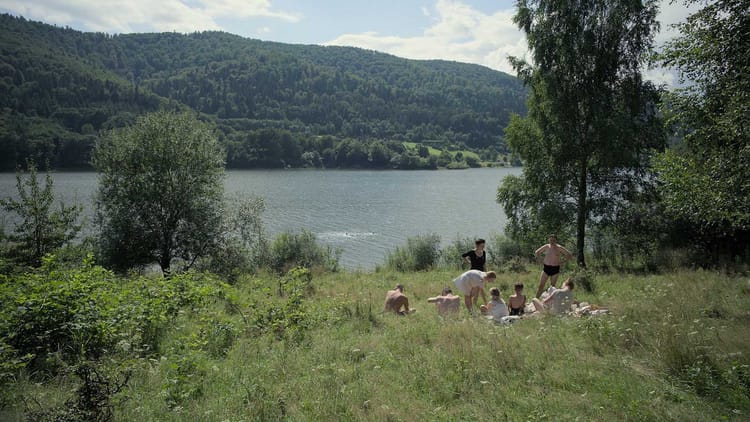
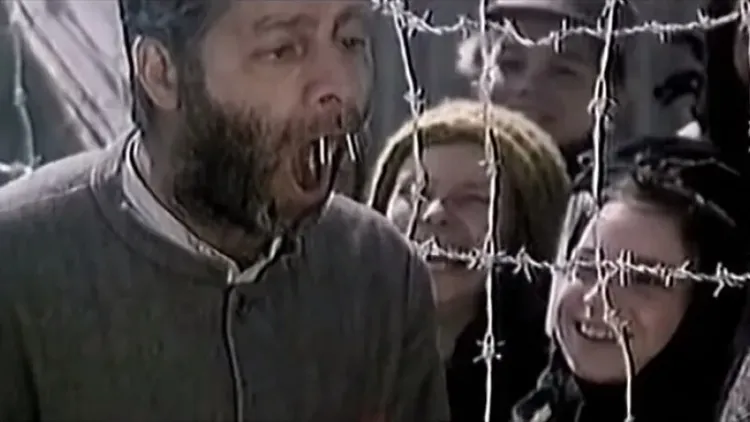
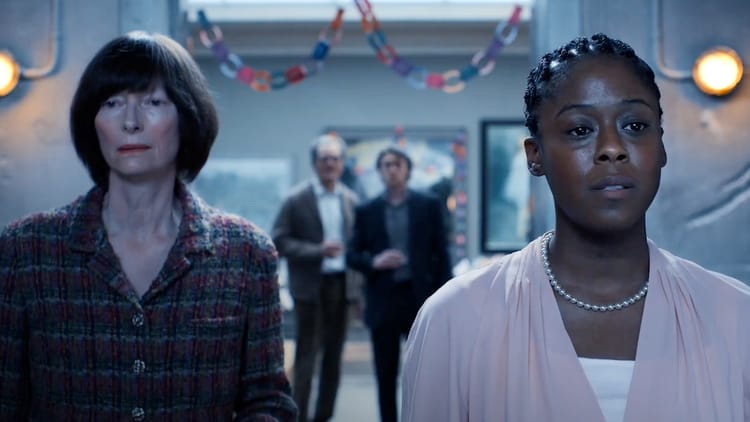
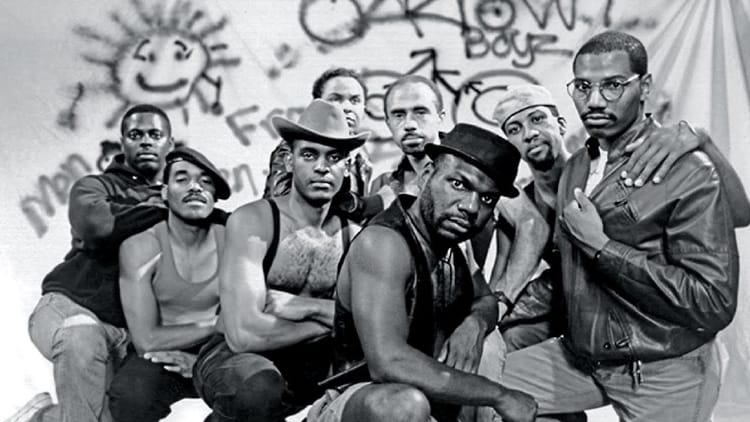

Member discussion